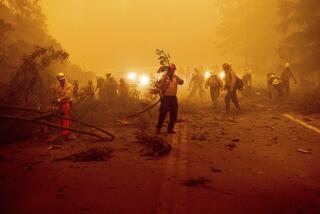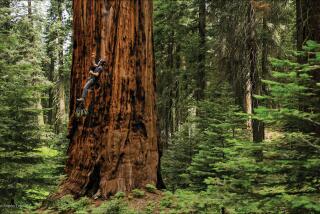Use Huge State Surplus, Plus Private Funds, for Open Space
Sometime this month, the California Department of Finance will revise its projected revenue figures for California state government, indicating what the state can actually spend next year. The announcement is expected to reveal the largest budget surplus in state history, perhaps as much as $8 billion.
Gov. Gray Davis says he is inclined to only use surplus funds for one-time expenditures with long-term benefits, a wise use of the state’s bounty. By sticking to this pledge, he won’t create programs that outlast their funding source. And in avoiding proposals that involve ongoing expenditures, Davis is highlighting needs often ignored in the normal budget process. As a result, he finds himself in a position to make one of the most significant conservation statements of any California governor. Davis is said to be considering using a portion of the surplus to establish a conservation trust fund. With a sizable one-time grant, the interest alone would become a permanent funding source for California’s significant open space needs.
Trust fund interest could purchase lands for parks, open space preserves and wildlife habitat. It could be used to preserve agricultural values through easements or other means that would keep lands in production. It also could be used to build facilities allowing public access to preserves and to maintain lands purchased with fund allocations--an important clause, as the purchase of additional lands would add to the state’s burden.
While a portion of the state surplus would be used for the initial deposit, a trust fund also could accept contributions from nonprofit organizations, private individuals, businesses, federal agencies and local governments. There would need to be a lure to draw in these contributions: Trust fund money should never be used to pay more than half the cost of any acquisition.
On many levels, this concept is similar to the David and Lucile Packard Foundation’s Conserving California Landscapes Initiative, a five-year, $175-million program designed to protect open space, farmlands and wildlife habitat in the Sierra Nevada, Central Valley and Central Coast. The Packard program offers lessons Davis can apply on a much broader scale.
Like the governor’s program, Packard stipulates that it will not pay for more than half of any purchase. This requirement has been a screen to avoid wasteful spending. If other funding partners don’t emerge, the property clearly is not a priority; we avoid the investment, just as the state would.
The Packard program has attracted new donors. Many of California’s new millionaires have a keen interest in land preservation. While some are inclined toward philanthropy, they often hold back for fear that their dollars will be wasted. With the prospect of matching funds, however, they see their dollars being stretched. Our experience shows this approach works; our own contributions to save undeveloped lands have been leveraged by more than $50 million in contributions from individual donors. Many of these people had never before made significant contributions.
Having a consistent funding source allows groups to plan over time. In many communities, people don’t even propose some conservation measures because they assume there isn’t money to purchase key parcels. Packard’s five-year commitment has led to constructive conversations in places where the will to protect lands simply was not evident--until there was a credible source of funding. If Davis takes this bold step, communities throughout the state will think anew about what is possible in the way of conservation.
As Davis decides, he should keep in mind another set of Finance Department numbers. The agency projects massive population increases for California, with the equivalent of four new cities the size of Los Angeles added over the next 20 years. If we’re to preserve what is beautiful and special about this state, we’ll need to identify and conserve landscapes. And we must do it before those lands are paved over. If Davis does, he will take his place among the state’s most visionary leaders. And he will welcome the next generation of Californians into a state every bit as beautiful as the one we know today.
More to Read
Sign up for Essential California
The most important California stories and recommendations in your inbox every morning.
You may occasionally receive promotional content from the Los Angeles Times.










